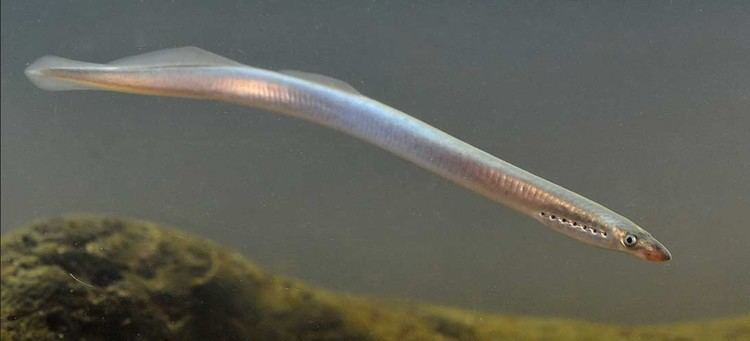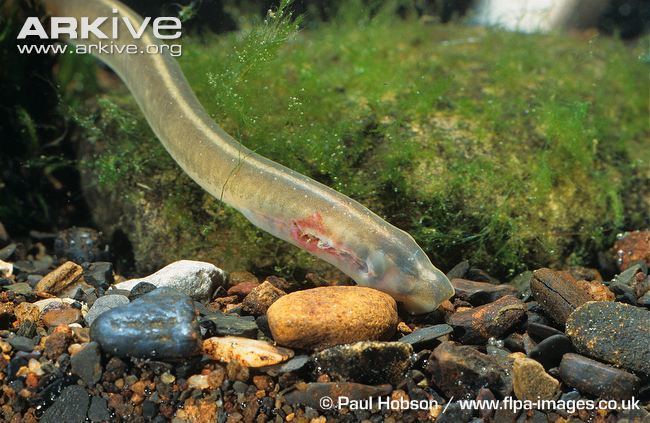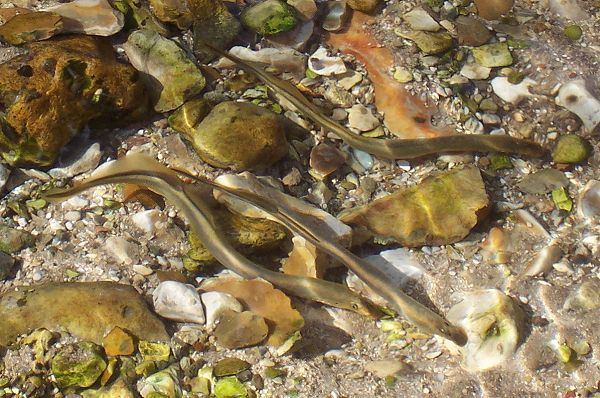Higher classification Lampetra Found in Loch Ness | Family Petromyzontidae Scientific name Lampetra planeri Rank Species | |
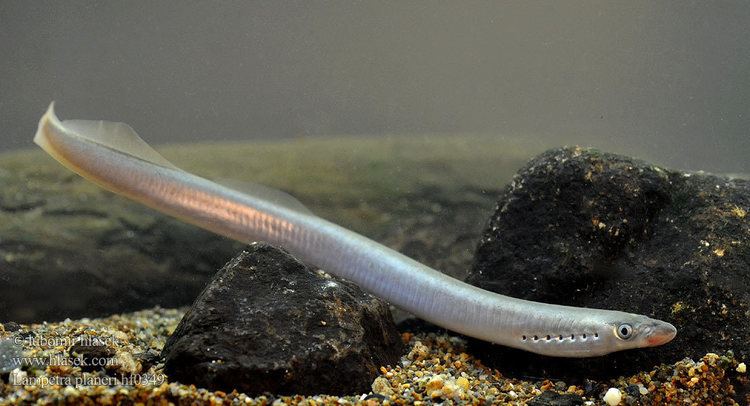 | ||
Similar Lampetra, European river lamprey, Lamprey, European bullhead, Sea lamprey | ||
Brook lamprey lampetra planeri underwater uk
The brook lamprey (Lampetra planeri, also known as the European brook lamprey and the western brook lamprey) is a small European lamprey species that exclusively inhabits freshwater environments. The species is related to, but distinct from, the North American western brook lamprey (Lampetra richardsoni).
Contents
- Brook lamprey lampetra planeri underwater uk
- Least brook lamprey spawning
- Description
- Distribution
- Biology
- References

Least brook lamprey spawning
Description
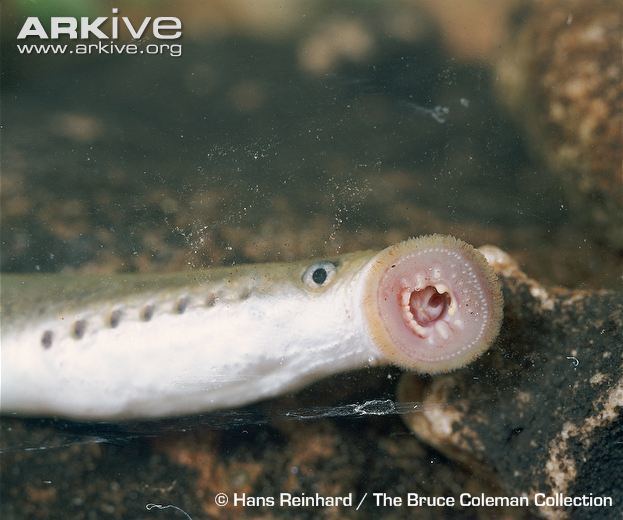
This lamprey is the most common of the northern European species and is also the smallest. Adult brook lamprey measure from 12 to 14 cm (4.7 to 5.5 in). The very elongate body is dark blue or greenish above, lightening to yellowish off-white on the sides and pure white below. Like all lampreys these fish lack paired fins and possess a circular sucking disc instead of jaws. They have a single nostril and seven small gill openings on either side behind the eye. The teeth are blunt and they can be told from the closely related river lamprey (Lampetra fluviatilis) by the fact that the two dorsal fins are more closely linked together.
Distribution
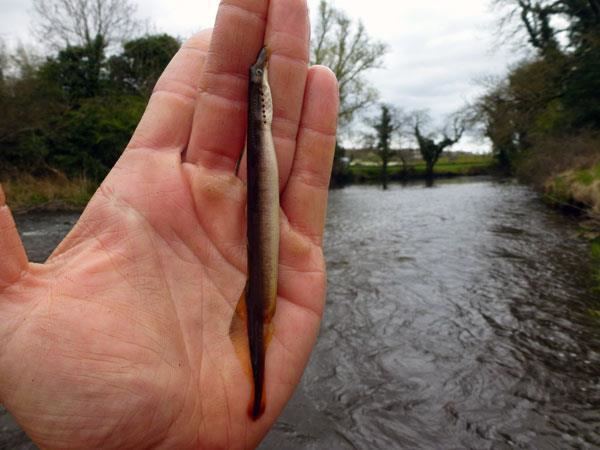
Although they are found in small streams, as their name suggests, they are also found in larger rivers throughout northern Europe as well as southern France, Italy, Sardinia, the Balkans and the upper reaches of the Volga. It is also found in southeast Alaska.
Biology
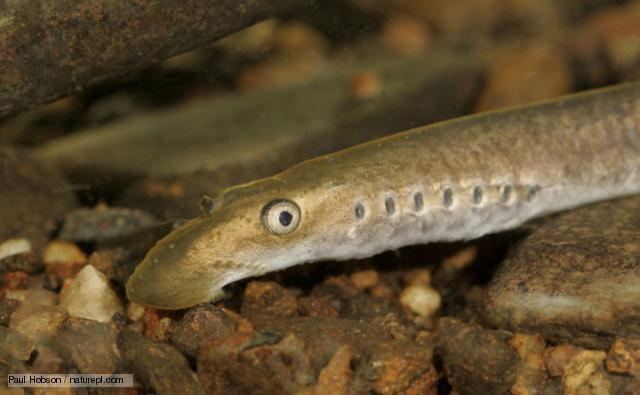
Unlike most species of lamprey, the adults do not migrate to the sea and do not have a parasitic phase. Adult brook lamprey do not feed and in springtime spawn in gravel close to the soft sediment in which they were previously resident. Adult brook lamprey spawn in small groups and die soon after spawning. The eggs hatch within a few days, after which the young larvae bury themselves in soft sediment with only the mouth protruding. The young lampreys are blind filter feeders, feeding on detritus and other organic matter for three to five years before maturing. Metamorphosis begins in the third or fourth year and is complete after the maturation of the gonads. Eyes and suction disk also develops during this time, while the intestinal tract degenerates and loses its function. The full transformation can take up to a year. Thus, these fish develop their teeth precisely when they are no longer able to eat. However, lampreys have been observed gripping stones with their teeth in order to build nests, showing that the teeth do in fact have a purpose.
